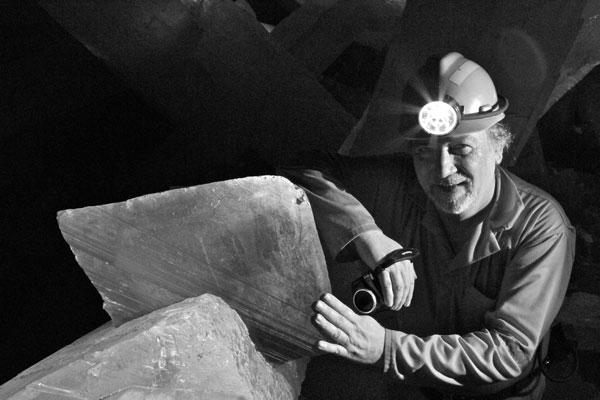Cave's Giant Crystals Take Eons to Grow


Giant crystals that can reach sizes larger than houses grow at incredibly slow rates, taking as long as a million years to reach more than two stories tall, scientists now find.
Crystals made of gypsum up to 36 feet (11 meters) long and about 3 feet (1 meter) thick were recently discovered in the now famous Cave of the Crystals in a mine in Naica, Mexico, by far the biggest such crystals in the world.
"This cave in Mexico is so beautiful, so wonderful, so bizarre," said researcher Juan Manuel García-Ruiz, a geologist at the University of Granada in Spain. "It looks like it comes from the movie 'Superman.'"
Other large gypsum crystals have also been unearthed in the El Teniente copper mine in Chile and the communities of Pulpi and Saelices in Spain.
These highly transparent crystals are not only striking in appearance, they are also mysterious: Scientists have been stumped by how crystals might reach such a giant size. Calculations suggested these crystals needed a narrow range of temperatures to form between 129 and 136 degrees Fahrenheit (54 to 58 degrees Celsius) and a very long time to do so. However, just how long they needed was enigmatic, because the timescales to grow a giant crystal are too vast to reproduce in the laboratory. [Related: The Harshest Environments on Earth]
Now, a new analytical technique researchers designed allows measurements of even ultra-slow growth rates. This method shines a beam of light at a target and analyzes the resulting patterns of light to determine the target's properties. Scientists used a beam of white light, one made of many different colors or wavelengths of light, which bounce differently off different materials, to get as complete and precise a picture as possible.
The slowest growth rate they measured from the crystals was an extraordinarily sluggish 14 femtometers per second. In comparison, a human hair is about 100 billion femtometers wide.
Get the world’s most fascinating discoveries delivered straight to your inbox.
"This is the slowest crystal growth rate ever seen," García-Ruiz told OurAmazingPlanet. "We had to observe the crystals for days to get an average growth rate."
At this slow rate, one such crystal would take a little more than 2,200 years to grow 1 millimeter. (The crystals grow faster at slightly higher temperatures.)
The researchers now will look for microscopic pockets of liquid that might exist within these giant crystals. "It's possible microorganisms might be inside these," García-Ruiz said.
The scientists detailed their findings online today (Sept. 12) in the journal Proceedings of the National Academy of Sciences.




